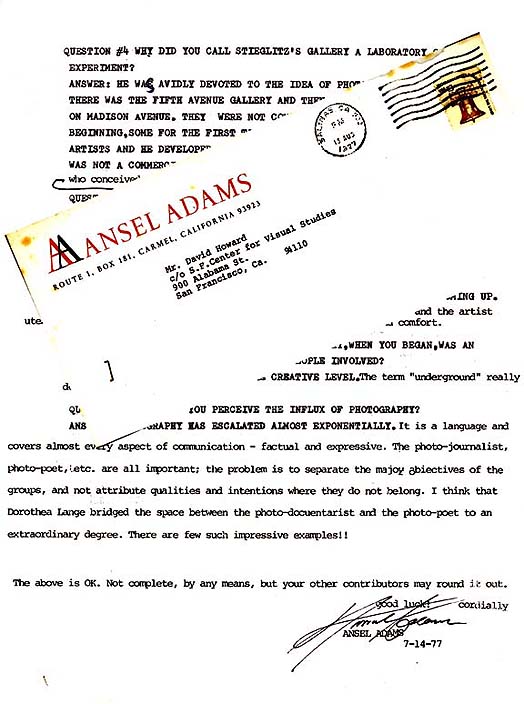

ANSEL ADAMS' INTERVIEW
WITH DAVID HOWARD
WITH DAVID HOWARD
ANSEL ADAMS: BORN 1902 STARTED PHOTOGRAPHY 1916
QUESTION #1 DH: How do you feel photography has changed, as an art form, during your life time?
ANSWER AA: I’ve always thought it was an art form, but it had very low appreciation in the beginning., except for some Europeans, and of course Stieglitz. Stieglitz always considered photography to be an art form and is the “father” of the creative concepts of the twentieth century. I do not think there is any question of photography being an art form!
I would say the second photographic renaissance began in the early 30’s with the F/64 Group and through the expression of Weston’s work and others. There still is some opposition to it in some museums and art schools, but I think photography has really grown into a mature art form.
The evaluation of the history of photography, and just what really did take place in the past one hundred and fifty years is difficult for me to say. A fine art historian can unravel it.
QUESTION #2 DH: Do you feel the motivations of young photographers differ from your original motivations?
ANSWER AA: Oh, in directions, but not in the basic intentions of art! Now they are departing from the strict straight photography that we promoted in the 30’s and 40’s. They're going into experiments and new ideas; some of which are very handsome.
I think we can not categorize. Things do not fit into a mold. Photography and photographers have an inevitable development. They progress more or less by steps. Every five or ten years some new point of view is developed and young people are inclined to follow it.
It would take a critic or someone really trained in historical research to analyze it. I couldn’t. I’m just a photographer!